Interior How to: Swap your 94-97 Oil Pressure Gauge for One That Works
#1
The fine folks at Mazda figured out that most car buyers were confused with actual gauges because they were idiots. Idiots prefer idiot lights. The Miata was designed as an enthusiasts' car but many fell into the hands of idiots and this made trouble for dealerships. So even though the 90-93 Miatas had real oil pressure gauges, the 94-up cars had an idiot light that looked like a gauge and fit into the same spot. It had a needle developed for idiots that only pointed in one direction if you had any oil pressure at all, right in the middle.
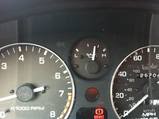
For any of you that are enthusiasts and are dismayed at having an idiot needle in your car there is a ready solution. Acquire a 90-93 stock gauge (with actual numbers on it) and oil pressure sending unit and swap them with the idiot parts. Here is how:
1. Acquire a 90-93 gauge. Miatas are getting old and cheap and many are ending up in you-pull-it junkyards. This would be the cheapest way. Also your fellow forum members may have swapped to aftermarket gauges or have access to a parts car that may have a real stock gauge. Here's one on ebay:
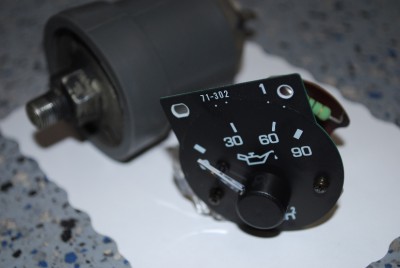
2. Acquire a 90-93 oil pressure sending unit. Same junkyard advice applies. This one is also acquired over the counter at your local parts store but not cheaply. RockAuto wants $120.
It looks like this:
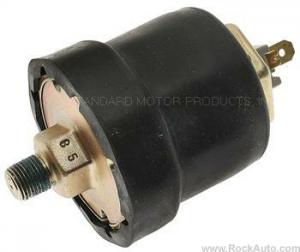
3. Remove original oil pressure sending unit from your engine. It is screwed horizontally into the engine under the intake manifold between the oil filter and the starter. It had one wire going to it with a blade type connector that must be unplugged prior to unscrewing it. It is hard to see from both above and from below with the engine in the car, but it is there.
It looks like this:
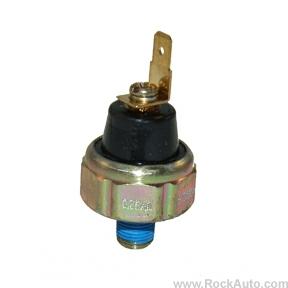
Here it is at home:
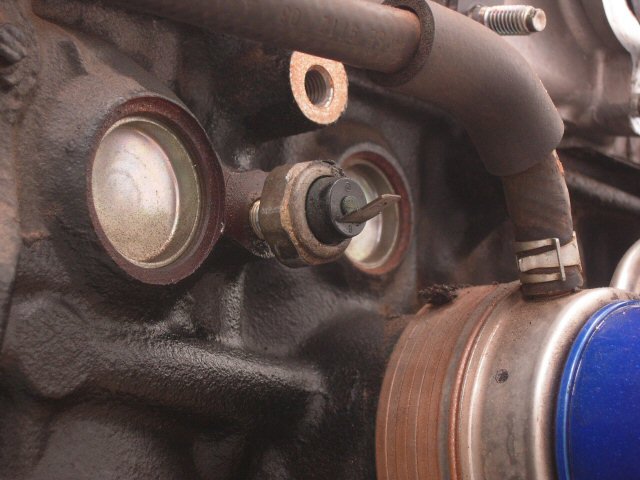
Notice the 94-97 unit is much smaller in size and uses a different size socket to remove or tighten it than the 90-93. I think I used a 15/16ths deep socket on the 94-97 sender because it fit. Metric tools what?
I found that a combination of working from the frame opening behind the passenger front wheel with the wheels steered all the way to the left and working from above got it done.
4. Install the 90-93 oil pressure sending unit. Screw it into the hole the other one came out of. Tighten it snugly but do not wrench it down so that you bend or rupture the housing. It is just sheet metal protecting precision pieces inside. It just needs to not leak at the threads. Reattach wire to the new blade connector.
If the head or intake manifold was off for some reason, or even the starter, it would be an easier and more opportune time to perform the swap, but it took ten minutes with everything in place.
5. Removing the gauge cluster.
*A. Remove the three or four screws underneath the steering column that hold the two halves of the cover over the ignition lock and headlight and wiper stalks. Mine had three screws and an empty hole.
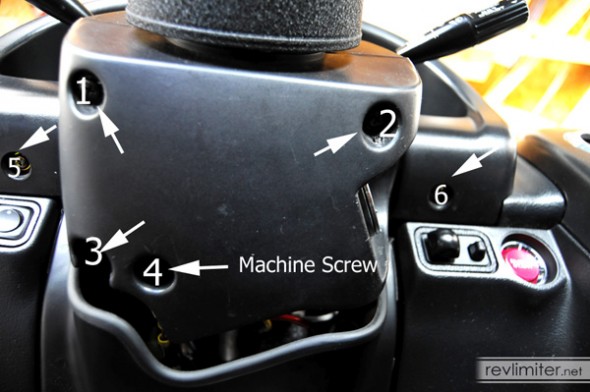
Carefully separate the top half of the ignition cover from the bottom half and set it aside. It will unsnap if you are careful. You may leave the bottom half in place if you wish.
*B. Remove the two screws under each side of the gauge hood.
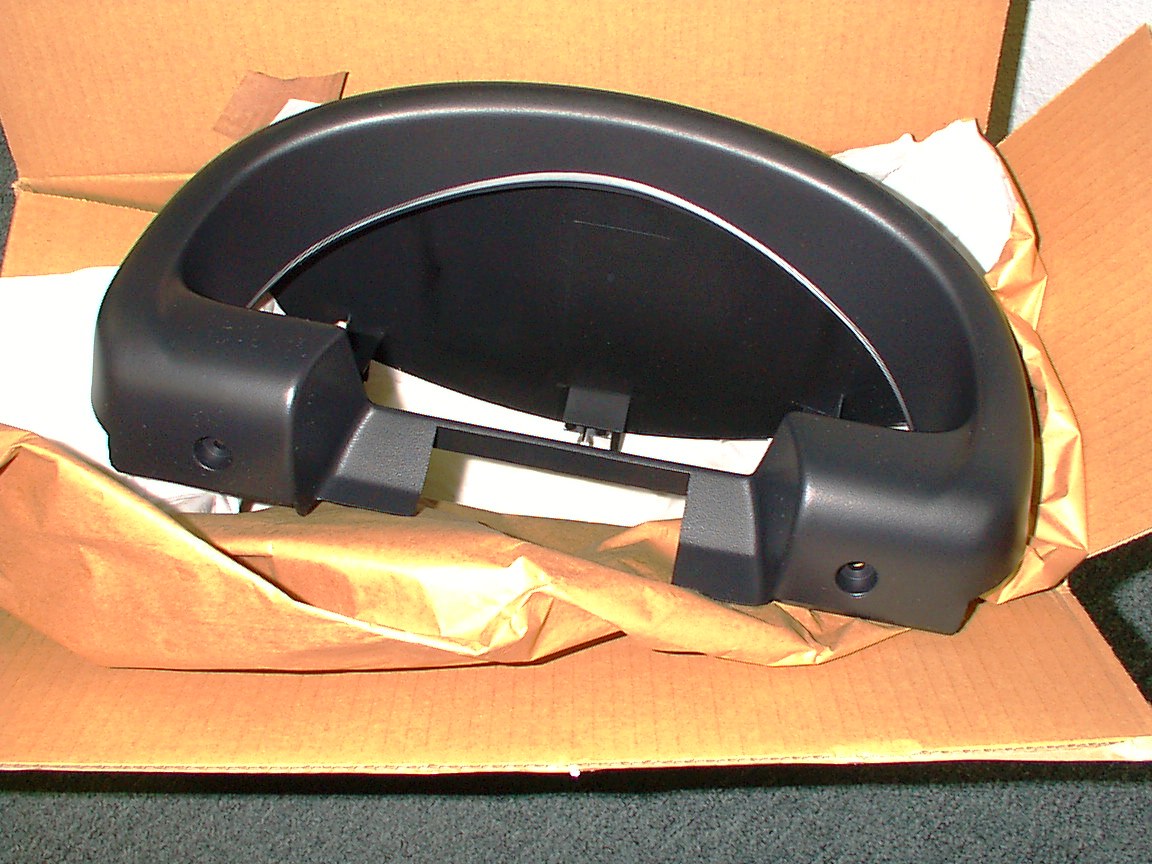
Carefully remove the gauge hood by pulling gently toward the driver. It does not lift vertically toward the sky or you might break the clips that retain it to the dash. Set it aside.
*C. Remove the four screws holding the gauge cluster.
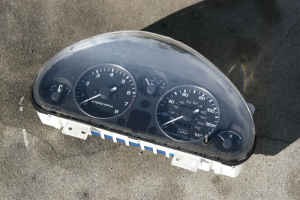
Separate the two wiring harnesses from the top left and right rear corners of the gauge cluster. There are squeeze tabs in the middle of the top of each connector that will allow the release. Locate the locking tab on the speedometer cable assembly and squeeze it to release it. There is one more connector near the left corner of the assembly that contains a red and white wire. Unplug this connector last. If you unplug this connector first the driver's airbag will deploy so be very careful to do things exactly as I say.
6. Remove clear lens from gauge cluster by squeezing the little tabs and gently prying it apart. It works best if you start at one end instead of the middle.
7. Remove idiot gauge. Do not loosen the two screws on the front of the idiot gauge or the driver's airbag will deploy. Instead, loosen the three screws immediately behind the oil pressure gauge. They will be marked {ign} {-} and {OIL.U}.

You will see them clustered there together. Gently remove the idiot gauge and throw it at the nearest idiot.
8. Install new gauge. Insert new gauge into location without leaving fingerprints on the black face because they will not be easy to remove. Align the rear of the gauge with the three holes in the cluster housing and reinsert the screws that were holding the idiot gauge.
9. Snap clear lens back onto gauge cluster.
10. Reconnect the red and white wire connector.
11. Reconnect speedo. Make sure it is secured and that the cable will not fall out.
12. Connect harnesses to rear of cluster.
13. Reinstall cluster hood.
14. Reinstall ignition cover by snapping together and installing all screws.
15. Turn on the engine and watch for gauge needle to move. If it moves get out and check for oil leaks at the sensor. If no leaks, congratulations you are done. If the needle did not move, check to make sure the blade connector was installed properly on the sending unit. If it was, then remove gauge hood and inspect the harnesses at the top of the instrument cluster to ensure that they were reinstalled securely. If that still doesn't work, brace yourself firmly in the seat and separate the connector with the red and white wire. No really, go ahead.
If you have done everything correctly it will look something like this:
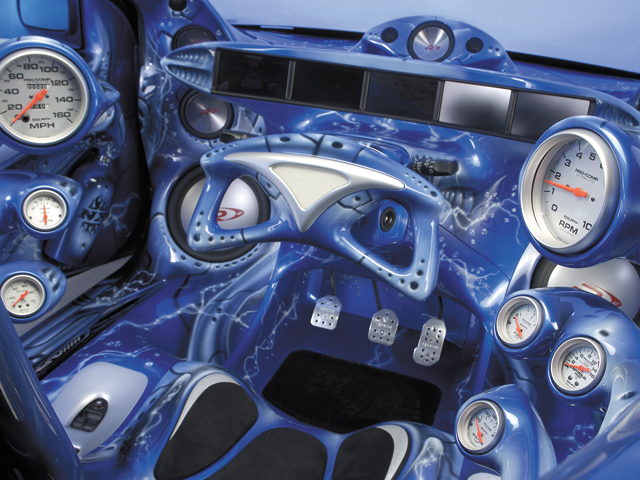
No wait, like this:
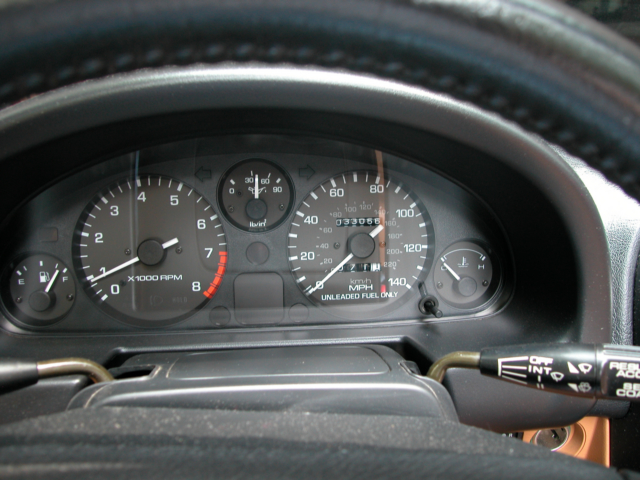

For any of you that are enthusiasts and are dismayed at having an idiot needle in your car there is a ready solution. Acquire a 90-93 stock gauge (with actual numbers on it) and oil pressure sending unit and swap them with the idiot parts. Here is how:
1. Acquire a 90-93 gauge. Miatas are getting old and cheap and many are ending up in you-pull-it junkyards. This would be the cheapest way. Also your fellow forum members may have swapped to aftermarket gauges or have access to a parts car that may have a real stock gauge. Here's one on ebay:

2. Acquire a 90-93 oil pressure sending unit. Same junkyard advice applies. This one is also acquired over the counter at your local parts store but not cheaply. RockAuto wants $120.
It looks like this:

3. Remove original oil pressure sending unit from your engine. It is screwed horizontally into the engine under the intake manifold between the oil filter and the starter. It had one wire going to it with a blade type connector that must be unplugged prior to unscrewing it. It is hard to see from both above and from below with the engine in the car, but it is there.
It looks like this:

Here it is at home:

Notice the 94-97 unit is much smaller in size and uses a different size socket to remove or tighten it than the 90-93. I think I used a 15/16ths deep socket on the 94-97 sender because it fit. Metric tools what?
I found that a combination of working from the frame opening behind the passenger front wheel with the wheels steered all the way to the left and working from above got it done.
4. Install the 90-93 oil pressure sending unit. Screw it into the hole the other one came out of. Tighten it snugly but do not wrench it down so that you bend or rupture the housing. It is just sheet metal protecting precision pieces inside. It just needs to not leak at the threads. Reattach wire to the new blade connector.
If the head or intake manifold was off for some reason, or even the starter, it would be an easier and more opportune time to perform the swap, but it took ten minutes with everything in place.
5. Removing the gauge cluster.
*A. Remove the three or four screws underneath the steering column that hold the two halves of the cover over the ignition lock and headlight and wiper stalks. Mine had three screws and an empty hole.

Carefully separate the top half of the ignition cover from the bottom half and set it aside. It will unsnap if you are careful. You may leave the bottom half in place if you wish.
*B. Remove the two screws under each side of the gauge hood.

Carefully remove the gauge hood by pulling gently toward the driver. It does not lift vertically toward the sky or you might break the clips that retain it to the dash. Set it aside.
*C. Remove the four screws holding the gauge cluster.

Separate the two wiring harnesses from the top left and right rear corners of the gauge cluster. There are squeeze tabs in the middle of the top of each connector that will allow the release. Locate the locking tab on the speedometer cable assembly and squeeze it to release it. There is one more connector near the left corner of the assembly that contains a red and white wire. Unplug this connector last. If you unplug this connector first the driver's airbag will deploy so be very careful to do things exactly as I say.
6. Remove clear lens from gauge cluster by squeezing the little tabs and gently prying it apart. It works best if you start at one end instead of the middle.
7. Remove idiot gauge. Do not loosen the two screws on the front of the idiot gauge or the driver's airbag will deploy. Instead, loosen the three screws immediately behind the oil pressure gauge. They will be marked {ign} {-} and {OIL.U}.

You will see them clustered there together. Gently remove the idiot gauge and throw it at the nearest idiot.
8. Install new gauge. Insert new gauge into location without leaving fingerprints on the black face because they will not be easy to remove. Align the rear of the gauge with the three holes in the cluster housing and reinsert the screws that were holding the idiot gauge.
9. Snap clear lens back onto gauge cluster.
10. Reconnect the red and white wire connector.
11. Reconnect speedo. Make sure it is secured and that the cable will not fall out.
12. Connect harnesses to rear of cluster.
13. Reinstall cluster hood.
14. Reinstall ignition cover by snapping together and installing all screws.
15. Turn on the engine and watch for gauge needle to move. If it moves get out and check for oil leaks at the sensor. If no leaks, congratulations you are done. If the needle did not move, check to make sure the blade connector was installed properly on the sending unit. If it was, then remove gauge hood and inspect the harnesses at the top of the instrument cluster to ensure that they were reinstalled securely. If that still doesn't work, brace yourself firmly in the seat and separate the connector with the red and white wire. No really, go ahead.
If you have done everything correctly it will look something like this:

No wait, like this:

#3
 It looks like the two pins that locate the dial face on the NB are much further from the center of the gauge than on the NA now that I've done some research. There may be other differences as well.
It looks like the two pins that locate the dial face on the NB are much further from the center of the gauge than on the NA now that I've done some research. There may be other differences as well.
#4
Excellent article - I can only add a few things:
- you need a 24mm deep socket to remove the original OPSU
- remove the original OPSU by placing the socket and extension from below and then ratchet from above - the intake manifold makes direct access from above pretty much impossible
- I hand-threaded the older, larger 'real' OPSU. I didn't want to overtorque (and you can't get a wrench in there anyway). Works great.
- you need a 24mm deep socket to remove the original OPSU
- remove the original OPSU by placing the socket and extension from below and then ratchet from above - the intake manifold makes direct access from above pretty much impossible
- I hand-threaded the older, larger 'real' OPSU. I didn't want to overtorque (and you can't get a wrench in there anyway). Works great.
#7



